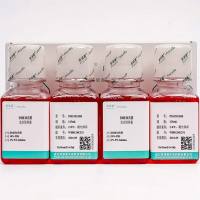Haemophilus influenzae type b, a colonizer of the human respiratory tract, is capable of breaching the epithelial cellular barrier of this niche, as well as endothelial barriers of the vasculature to enter the blood system, prior to dissemination to other tissues including the brain (1 ). Besides typeable H. influenzae, acapsulate (nontypeable; NTHi) stains, especially those belonging to the clonal biogroup aegyptius, are also capable of causing disseminated infections (2 ). The specificity of the organism for human respiratory mucosa and the mechanisms that allow it to transmigrate across both epithelial and endothelial barriers are not fully understood. Bacteria may interact directly with host cells, or they may first interact with phagocytic cells and cross the barrier as passengers within phagocytes. In the former case, interactions with target cell receptors may lead to adhesion, followed by cell signaling events that allow either entry into the cells and transcytosis or opening of cell-cell junctions and paracytosis. Investigations at the cellular level that define the precise components involved in the interactions have been facilitated by the use of immortalized cell lines as in the case of epithelial cells or limited culture of primary human cells as in the case of endothelial cells. Although increasingly more endothelial cell lines are becoming available, human umbilical vein endothelial cells (HUVECs) remain a popular choice of primary endothelial cells and will be described here in detail.






